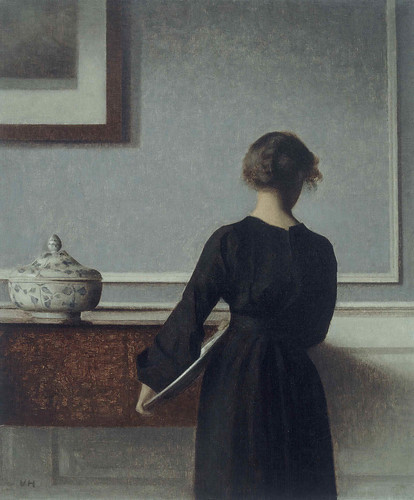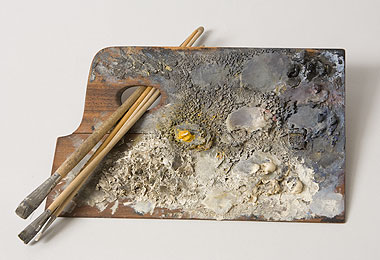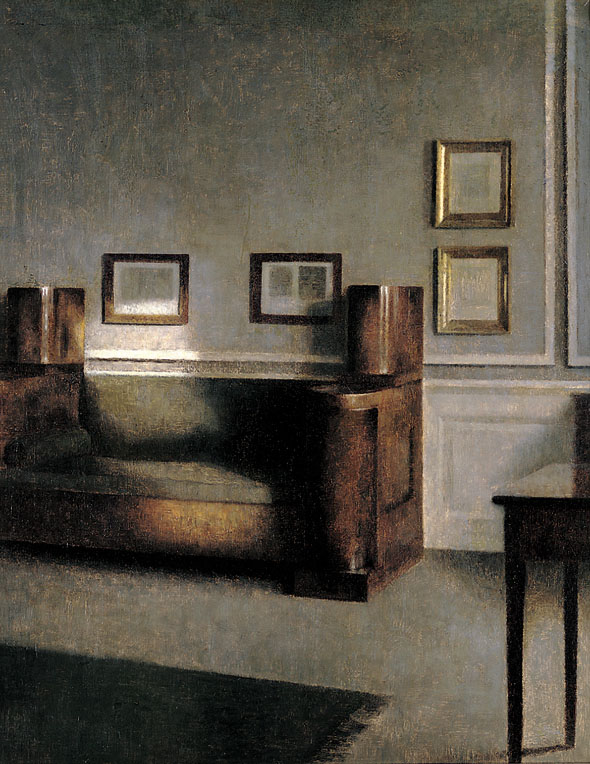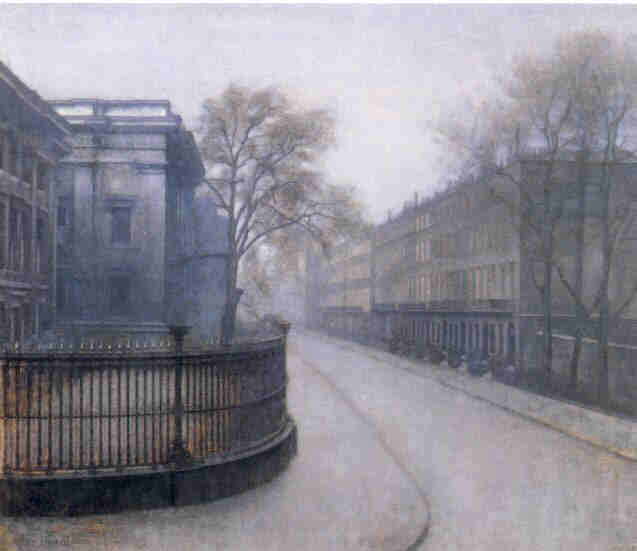
Vilhelm Hammershøi (1864-1916) was born in Copenhagen, Denmark. The exhibition, Vilhelm Hammershøi: The Poetry of Silence, at the Royal Academy in London displays more than 60 of Hammershøi’s works and runs until September 7. (It will then travel to Tokyo.)
Hammershøi received training at the Royal Danish Academy of Fine Arts, and produced a number of landscapes early in his career. After graduating he submitted a number of portraits to the Royal Academy’s annual exhibition, but was regularly rejected.

Portrait of the Artist’s Sister (1887) Oil on Canvas.
Instead of challenging the system, beginning in the 1890s Hammershøi began painting interior scenes of his home that usually featured his wife, Ida. These paintings were generally sold directly to patrons and only occasionally on public view.

Vilhelm Hammershøi. Interior with Young Woman seen from the Back (c.1903–04) Oil on canvas. Randers Kunstmuseum.

Vilhelm Hammershoi’s Palette.

Vilhelm Hammershøi. Sonnige Stube (1905) Oil on canvas, 49.7 x 40 CM. Nationalgalerie Berlin.

Vilhelm Hammershøi. The British Museum (c. 1905-1906). Oil on Canvas.
Thinking of the title of the exhibition, The Poetry of Silence, I was reminded of a poem titled Silence by Billy Collins:
There is the sudden silence of the crowd
above a motionless player on the field,
and the silence of the orchid.
The silence of the falling vase
before it strikes the floor
the silence of the belt when it is not striking the child.
. . .
The silence before I wrote a word
and the poorer silence now.
(Excerpt from Silence by Billy Collins. The Trouble with Poetry and Other Poems.)
For an antidote to the ever-busy lifestyle we all lead, I highly recommend finding a Hammershøi painting and sitting in silence for a time.